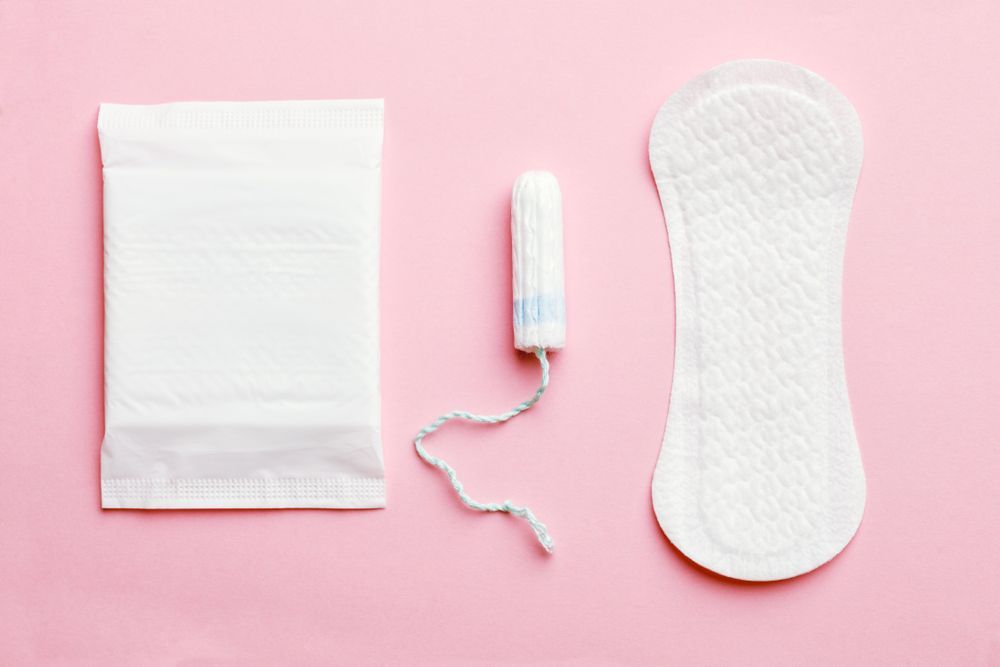
How to dispose of period products: A comprehensive guide
Thursday 10th September, 2020Like it or not, Aunt Flo will visit us ladies at some point in our lives. But with the average woman using over 11,000 disposable menstrual products during a lifetime it's no surprise we’re seeing our landfills and oceans filled with plastic waste.
Both tampons and pads consist of a plethora of plastic - they’re wrapped in plastic, encased in plastic applicators or an outer pack and even the absorbent part includes plastic components to ensure the product doesn’t break up or disintegrate during use and can absorb more liquid.
But surely periods weren't always this environmentally damaging?
The modern period product
We’ve come a long way from the days of rubber bloomers and menstrual belts, but how exactly did the modern menstrual product become what it is today?
The demand for a discrete, lightweight and convenient product was what women wanted and with clever marketing, ‘disposable’ was seen to be an advantage. No need to endure the tyranny of old make-do products disposable was the ‘modern way’ and was very appealing to the new post-war working woman.
And, whilst plastic has no doubt improved women's experience with periods, it has come at an environmental cost. For instance, in 2019 The Marine Conservation Society found 4.8 pieces of period care waste for every 100 meters of beach cleaned.
Period product use and toilet disposal
So, why do people flush period products down the toilet? There are a number of reasons why us Brits are partial to the old flush.
We’re lucky to have a sewage system that can handle toilet paper unlike our European neighbours, for whom binning is normal - not only for period products but toilet paper too. So it’s already ingrained in us that our sewage system should be able to handle anything, literally. Check out this list of the weirdest things found in our sewers, you won’t believe your eyes!
There’s also not much coverage in the media around correct period product disposal and the environmental damage it can cause. Compare that with the news surrounding microbeads - both products travel via the foul water drain, bypassing our treatment plants and ending up in our waterways, and yet period products are seldom discussed. Perhaps because they’re still classed as taboo.
If you happen to look at the side of a tampon box (who does that really?) the only piece of information suggesting you can’t flush these items is a small silhouette of a toilet with a cross over the top. There’s no information explaining that tampons and pads don’t disintegrate the same as toilet paper.
As far as public restrooms go, many have sanitary bins next to the toilet, but what about at your friends’ house!... Lots of households don't have bins in their toilets, which usually means the toilet is used instead of the bin.
Depending on how close you are to your friend, you might call them out, asking, ‘where on earth am I meant to dispose of my tampon?!’ But unless you fancy walking downstairs, tampon in hand, to ask the question, chances are you’re going to flush out of the embarrassment. Out of sight out of mind right?
Manufacturers still want to give the illusion of disposable being ‘mess-free’ and more convenient. But guess what, it’s not!
Why are period products bad for our sewers and seas?
With most us ladies being accustomed to using a tampon or a pad every single month for years it might be hard to comprehend how damaging these items, which we’ve not really paid much attention to until recently, are to the environment. Let’s look into the reasons why:
- Mainly composed of cotton
- Cotton production requires lots of water
- Insecticides and pesticides are used on crops
- (Parts made of) Polyester
- Not natural material
- Contains microplastics
- Unsustainable resource
- Durable
- Build-up in sewage network
- Acts as a plug/net, causing all other solids to stick together
- Component of fatbergs
- Non-biodegradable
- Take hundreds of years to break down fully
- Can bypass treatment plants and up in open ocean
- Ingested by marine life and ending up in our food chain
How to dispose of period products?
- Remove the used tampon or pad.
- Use toilet roll, a biodegradable bag (such as FabLittleBag) or pad wrapper to wrap up the used period product.
- Locate the nearest bin (avoiding the toilet at all costs!).
- Drop period product in the bin.
- Wash your hands thoroughly.
- Give yourself a pat on the back for doing your bit to protect our sewers and seas!Follow Unblocktober and sign up to receive your free resource pack with more advice and guidance like this.

